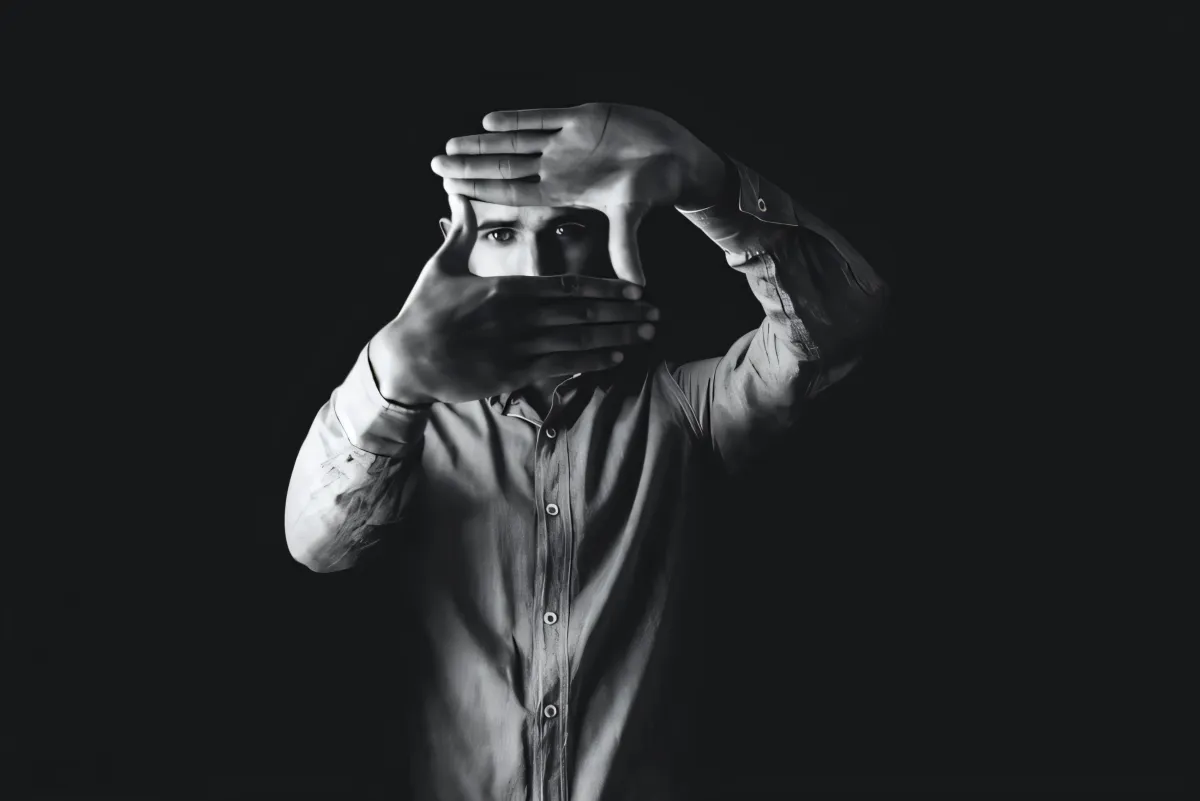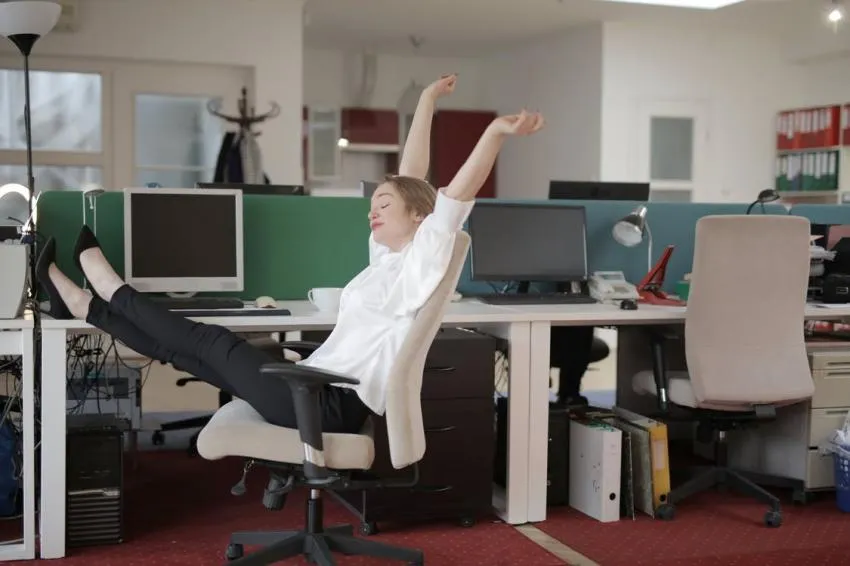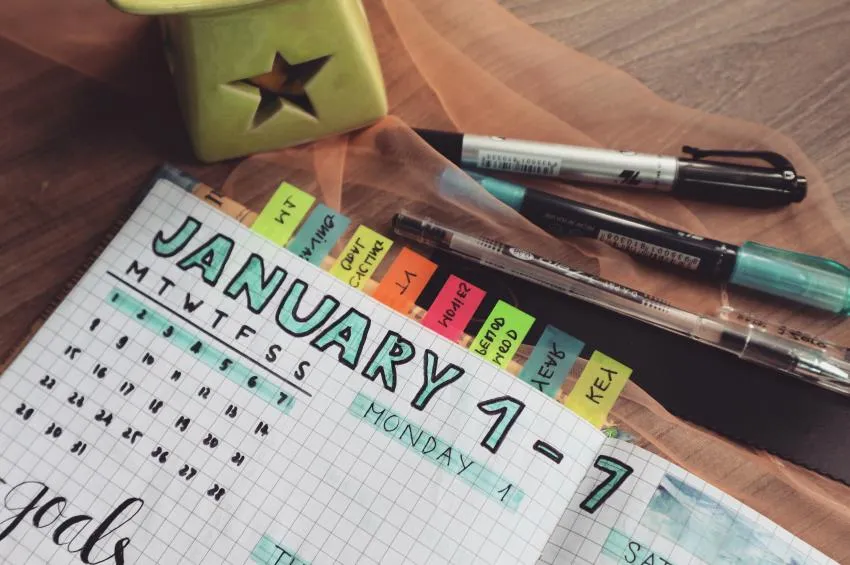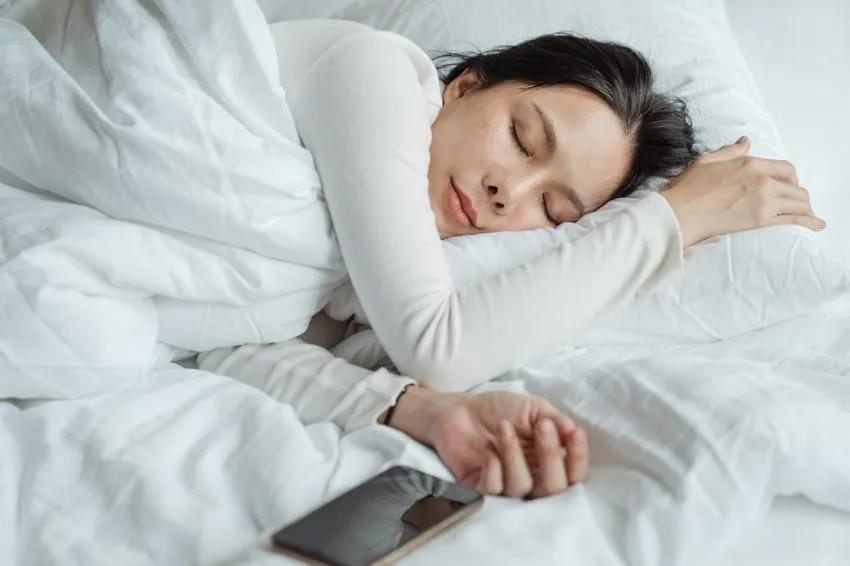Five Tips For Keeping Creative When ADHD And Depression Get In The Way
If you have ADHD, you know that ADHD people are full of awesome, creative ideas. However, it can be hard to follow through when procrastination, distractions, and depression get in the way. If you’re unable to medicate or have chosen not to, it can feel difficult to reach your creative goals.
All is not lost! Here are some tips I’ve compiled and used to accomplish my own creative projects, along with some science to back them up. Enjoy these five great tips for getting through your blocks, and learn the science behind them.
What are ADHD and depression symptoms?
Before we get into it, let's talk a bit about ADHD and depression.
The CDC defines ADHD as a disorder that manifests in children as:
- Daydreaming often
- Losing things frequently
- Physical restlessness
- Excessive talking
- Taking unnecessary risks
- Difficulty resisting temptation
- Trouble taking turns
- Difficulty getting along with others.
Though some of the symptoms of ADHD manifest differently in adulthood, many adults with ADHD still feel their effects. These can be even more difficult to cope with while dealing with depression, which has been found in studies by Cambridge and BMC Psychiatry to have significant overlap with ADHD, with one study finding that those with Major Depressive Disorder are 7.5 times more likely than the general population to show symptoms of ADHD.
Depression symptoms can include, according to the CDC:
- Not wanting to do activities that used to be fun
- Feeling irritable‚ easily frustrated‚ or restless
- Having trouble falling asleep or staying asleep
- Waking up too early or sleeping too much
- Eating more or less than usual or having no appetite
- Experiencing aches, pains, headaches, or stomach problems that do not
- improve with treatment
- Having trouble concentrating, remembering details, or making decisions
- Feeling tired‚ even after sleeping well
- Feeling guilty, worthless, or helpless
- Thinking about suicide or hurting yourself
Being motivated and creative can be difficult when you’re struggling with one or both of these disorders. Hope isn’t lost, though!
If you’re struggling with ADHD and depression, here are five things you can do from home to help you chase and achieve your creative goals:
1. Reframe Tasks

According to the New York Times, procrastination frequently stems from negative emotions around a task: anxiety, frustration, and insecurity are just some of the things you might feel when thinking about tackling your projects.
One common problem ADHD creatives come up against is Rejection Sensitive Dysphoria or RSD. This symptom of ADHD manifests as increased sensitivity to rejection, both real and imagined. According to WebMD, this is because ADHD causes overreactions to outside stimuli.
This can get in the way of creative projects when you begin imagining critics’ responses and think yourself into a dark hole of predicted rejection. This can lead to a feeling that the project is impossible to start unless it’s done at the exact right moment or in the exact right way.
When you also have depression, it can feel like you just don’t have the energy to ever accomplish your projects at hand, and it might feel futile to even try. Here is how you can overcome negative feelings:
a. Make starting the goal

If you never succeed, it becomes hard to try. When we don’t see a task through, we miss the flood of good chemicals and celebration at the end. So, if you’re someone who finds it hard to complete tasks it’s only natural to find them hard to start; what’s the point, if you’ll never get that feeling of accomplishment?
The trick to get around this is to make starting the goal. List the smallest, easiest thing you could do towards the project, and reward yourself once you do it.
The first time I heard this tip, it was from tumblr user the-final-sif. Not only is this tip backed up by professionals, who also recommend breaking down goals, but it’s been reblogged thousands of times by others who agree.
Making sure to reward yourself is important since it will change the task in your mind from one that’s hard and frustrating to one that gets you a celebration, making working on it more bearable. It might feel strange to celebrate something so seemingly small, but remember what this really means: you got started, the most important step in any project!
b. Remove the penalty for failure
In a Ted Talk by YouTuber Mark Rober, he talks about something called “The Super Mario Effect.” This is the name he’s given to what he observed during an experiment: that people who were not penalized for failure were more likely to succeed because they didn’t stop trying.
Maybe failure is showing people your project and having them dislike what you’ve done. Maybe failure is not making something the exact way you see it in your head. Regardless of what it looks like, defining and removing, or lessening, the penalties for failure can help keep you feeling creative instead of desperate and depressed.
c. Take a break

If your depression is especially bad, you may keep having days where you feel like you just can’t do anything. And that might mean you can’t; we can only push ourselves so hard before we have to rest.
A 2019 study by Hiroshima University found that pushing yourself too hard can actually worsen your mental health; in their study, those who reported feeling a “sense of personal responsibility and blame for negative outcomes” or a “responsibility to continue thinking about a problem” were more likely to exhibit symptoms of Generalized Anxiety Disorder, which shares similar traits and treatments with ADHD and often co-occurs.
Telling yourself that you have to accomplish something right now, even when you feel like you couldn’t possibly do it, sets you up for failure. Instead, allowing yourself to rest can help you come at things from a new angle.
Try taking a break and spending some time taking care of yourself; do something nice, like stepping outside, standing under warm water (maybe even showering, if you can), doing some gentle stretching, or getting something to eat.
Set a time when you’ll come back to your activity and try again, but until then, let yourself rest and practice self-care.
2. Develop a Routine
So, you’ve started chipping away at your blocks. Wouldn’t it be great if you could do that every week?

There is a lot of evidence that points to difficulty with time perception in folks with ADHD. According to several studies, ADHD can make foresight difficult when it comes to timing. I know from experience that the future seems to come at an uneven pace; getting lost in tasks and misremembering important dates constantly makes it difficult to stick to a schedule. My most recent therapist suggested using a planner, which was really helpful.
If a lot of the stress in your life comes from missing important events and forgetting things, or feeling overwhelmed about deadlines, I cannot stress enough how much a planner helps. Being able to visualize time can help you manage it, allowing you to create a routine that includes working toward your goals and taking time for self-care.
Licensed therapist Kathleen Smith also advises creating a routine as a way of remaining creative when you feel low: “being able to maintain what small routine things you can makes a big difference,” she said in an article for Buzzfeed.
So try grabbing a planner! Plot out a few things you can do toward your goal, but also a few self-care things you can do that make you happy, so that neither crowds the other out.
3. Get Your Sleep Right

As you begin to develop routines, don’t forget to make sleep a priority; getting into a good sleep routine can help you accomplish your creative goals and find solutions to setbacks in your process. Not only has sleep been linked to enhanced creative problem-solving, but it can also help keep depression and ADHD symptoms manageable.
In fact, the symptoms of sleep deprivation overlap significantly with ADHD, and experts who gathered at the 2017 European College of Neuropsychopharmacology Congress in Paris speculated that sleep deprivation may even be a cause of ADHD, though it’s difficult to tell since ADHD also causes sleep deprivation in many ways. Keeping an inconsistent sleep schedule has also been found to worsen Depression symptoms.
What is it about ADHD that makes it so much harder to sleep? For starters, studies have shown that people with ADHD take longer to produce melatonin at night and cortisol in the morning, resulting in a delayed circadian rhythm, making us feel tired later than others would once the lights have gone out.
Another reason is that people with ADHD struggle to pull themselves away from technology; a 2019 study found that adolescents with ADHD spend up to twice as much time doing things like using the phone, watching TV, and playing video games. The study also found that, across the board, technology use directly correlates with sleep difficulties in both ADHD and non-ADHD groups. This means, no matter who you are, it’s important to put the screen down before bed.

As people with a disorder that causes poor impulse control, it’s definitely hard to pull away from our machines at night, but it’s so important to get our brains ready for sleep.
Here are a few tips to help you hack your brain and get your sleep:
- Improve your sleep hygiene. My therapist made this great suggestion: make the bed a place for sleep; don’t use your phone in bed or try to do work there. When your body associates your bed with rest and not work, it will be easier to relax once you get in it.
- Keep it regular. To help your body get into a rhythm, try to go to bed at the same time every night. Many studies suggest that irregular bedtimes can have a negative effect on the body.
However, if you struggle to get to bed on time, just try to wake up at the same time each morning and try not to nap during the day; your body will likely get the hint and make you tired earlier. - Find an alternative to screens. It’s hard to cut yourself off from anything without a good alternative. If you typically use your phone before bed, try creating a new routine around something less bright, starting at least one hour before bed.
Good alternatives include reading a book, listening to a podcast, meditating, journaling, or working on a calming project like knitting, embroidery, or painting. If you can make your alternative especially appealing it will be easier to turn away from your computer, TV, or phone, so add in things you really like; maybe a hot cup of tea, or a scented candle?
If you keep finding that you start your bedtime routine too late, or not at all, try setting an alarm. When it goes off, it’s time for your screen to turn off so you can be well-rested tomorrow! - Try more sunlight. According to the Sleep Foundation, light therapy helps with insomnia, depression, and other circadian rhythm disorders by exposing the patient to a bright light meant to mimic sunlight.
Although you may not have the money to see someone for light therapy, you can help yourself by going for a morning walk to get some sun.
A scientific report from 2008 found that “when people are exposed to sunlight or very bright artificial light in the morning, their nocturnal melatonin production occurs sooner, and they enter into sleep more easily at night.” This means just walking in the sunshine for a while each day can help combat the difficulty ADHD brains have with getting sleepy at bedtime.
It is recommended to try for at least 30 minutes of sun exposure, unobstructed by the glass if possible, within an hour of waking up. - Try a sleep app. This one is tricky since it involves a screen near your bed; you’ll need to be the judge of whether or not this will be a problem. However, if you choose to try this route, there are some great apps out there to help you monitor your sleep.
I use an iPhone app called Sleep Cycle, which lets me make notes about what I did that day that might affect my sleep (ate late, exercised, got outside, etc.). Then it tracks my sleep using the microphone to monitor how much I toss and turn. This has helped me identify what is and isn’t working so I can adjust my routines for better sleep.
4. Collaborate With Others

One of the things that people with ADHD struggle most with is self-regulation; even when we create schedules and routines, we can be tempted not to stick to them. Working with others helps keep us accountable. Collaborators can also help keep us from sliding into old emotional patterns, like tying our self-worth to our work or feeling like we’re not good enough to be making something.
According to William Dodson, M.D., people who succeed without medicating their ADHD often have someone in their life that helps cheer them on. Dodson claims “it is important to have someone who sees you, not your problems.” For this reason, look to collaborate with people who like you outside your work.
However, make sure to eliminate extra stress by working with people you can be honest with about mental health setbacks when they occur.
5. Take Extra Care of Yourself

For those of us with depression, this can be the hardest thing to do. However, evidence suggests that a healthy body makes a healthy mind, one better equipped to deal with ADHD and Depression.
Recent studies have indicated that people with ADHD have an “excessively efficient dopamine-removal system,” meaning that dopamine, a neurotransmitter involved in many processes in the brain including processing rewarding experiences, does not spend enough time in the brain to perform its normal functions. ADHD brains also show reductions in norepinephrine, which affects attention, and serotonin, which affects “mood, social behavior, sleep, and memory,” and is linked to depression.
Because of this dopamine deficiency, people with ADHD seek out things that give us a dopamine rush: video games, sugar, drugs, gambling, and- according to Business Insider- getting likes on social media are just some of the things that can cause a spike of dopamine in the brain.
However, here is the list of healthier and more sustainable ways to help our brains produce more dopamine, norepinephrine, and serotonin:
a. Consuming Healthy Diet

One way you can naturally help your brain is by eating healthier. According to several studies, eating a diet high in tryptophan, an amino acid that the body turns into serotonin, along with antioxidants, may help treat depressive moods. A separate study suggests accompanying such foods with carbs to help the body take in more tryptophan. Healthline recommends the following snacking choices for increasing serotonin:
- whole-wheat bread with turkey or cheese
- oatmeal with a handful of nuts
- salmon with brown rice
- plums or pineapple with your favorite crackers
- pretzel sticks with peanut butter and a glass of milk
Additionally, to make dopamine and norepinephrine, our brains need tyrosine, an amino acid our body can make using another amino acid, phenylalanine, which we get from food. Amino acids like these two can be found in foods that are high in protein, according to WebMD. Some high-protein sources include:
- Milk and cheese
- Eggs
- Soybeans
- Meats like turkey, chicken, and beef
High-fat diets, however, have also been shown to interfere with dopamine signaling in the brains of mammals, so try to go for low-fat options when selecting your protein.
Lastly, according to WebMD, eating the complex carbs that come from veggies and fruits along with omega-3 fatty acids from fish like tuna and salmon can also help treat ADHD by improving overall brain health.
b. Exercise Regularly

Studies have shown exercise boosts dopamine, norepinephrine, and serotonin levels, helping combat the deficit in ADHD brains, and the Mayo Clinic recommends exercise for the treatment of Depression and Anxiety.
Exercise can also help boost confidence and give you a sense of accomplishment. Although Depression can sometimes make it hard, here are three tips to help you stick to a regular exercise schedule:
- Try starting really small. There are lots of workout videos on YouTube that last just ten minutes. Don’t worry about keeping up with the people in the video, just try to work out for those ten minutes, doing whatever you can. If this is too much, try starting with beginner yoga, or just do a silly dance; whatever you think is the easiest way to get you moving your body for a little while.
- Make your goals attainable. If you don’t think you can work out every day, don’t make that your goal; you’ll feel more positively about exercising if you regularly succeed in what you set out to do, which will help motivate you to continue.
- Focus on how you feel after your exercise. You did it! How well does it feel to have taken your health into your hands? If you can remember this feeling of accomplishment, you’ll be more likely to exercise again.
If you’re not able to exercise due to a medical condition or medication, that’s alright; just do your best to take care of your body in a way that works for you!
Now go out there and kick some creative butt, and don't forget to rest and take care of yourself along the way!

Opinions and Perspectives
Understanding the link between ADHD and depression helps me approach both more effectively.
The sleep hygiene tips are practical and don't require expensive equipment or complicated routines.
Trying to combine exercise with creativity by sketching during my walks. It's working surprisingly well.
Finally, an explanation for why traditional productivity advice often fails for ADHD brains!
The article's tone is so understanding of the struggles without being condescending.
Fascinating to learn about the relationship between ADHD and melatonin production.
The part about self-care being crucial rather than optional really resonated with me.
Love the emphasis on making starting the goal rather than completion. Takes so much pressure off.
The connection between screen time and sleep quality is eye-opening. Starting to rethink my evening routine.
Really helpful to see specific food suggestions rather than just general nutrition advice.
Understanding the science behind dopamine deficiency helps explain why certain strategies work better than others.
The suggestion about breaking down goals into tiny steps has been revolutionary for my creative process.
Never realized how much my irregular sleep was affecting my ADHD symptoms until I read this.
Working with understanding collaborators has helped me stick to deadlines without the usual anxiety.
Small wins really do add up. I've started celebrating tiny progress and it's improving my motivation.
The tip about removing penalties for failure reminds me to be kinder to myself during creative blocks.
I appreciate how the article balances scientific evidence with practical, doable suggestions.
The part about RSD really hit home. Nice to know there's a name for that overwhelming fear of criticism.
The food recommendations are great, but I find meal planning with ADHD to be its own challenge.
Learning about the science behind these tips makes them feel more legitimate somehow. It's not just random advice.
Absolutely agree with the morning sunlight suggestion! It's hard to get up earlier, but it makes such a difference.
The explanation of why we seek dopamine hits makes me feel less guilty about my social media habits. Now I can work on healthier alternatives.
Has anyone tried light therapy? The sunlight recommendations got me curious about trying a SAD lamp.
The article's approach to exercise is refreshingly gentle. Starting with just 10 minutes feels much less daunting.
Setting alarms for bedtime routines has been more effective than I expected. It's like having an external conscience.
I've found that combining these tips works better than trying to implement them individually. They seem to reinforce each other.
The connection between ADHD and depression is stronger than I realized. Explains why managing one helps with the other.
Just started implementing the reward system for small starts. It feels silly sometimes but it really does help with motivation.
Finding the right collaborator is crucial. Working with someone who understands mental health challenges has made such a difference for me.
The protein-rich food suggestions are helpful, but I wish they included more vegetarian options.
Never thought about making my bed a sleep-only zone. Been trying it for a week and already seeing improvement in my sleep quality.
The bit about ADHD and time perception explains why I always either massively overestimate or underestimate how long tasks will take.
What I appreciate most is how the article acknowledges that these strategies might not work perfectly every time, and that's okay.
Anyone else notice how their creative energy fluctuates with their sleep quality? The science behind this in the article makes so much sense.
To the person asking about screen alternatives before bed, I've found audiobooks to be a great replacement. All the story engagement without the blue light.
The hardest part for me is accepting that some days will be less productive than others. Still working on not feeling guilty about rest days.
Interesting point about high-fat diets interfering with dopamine. Never knew that could impact creativity.
Reading about the dopamine-removal system makes me understand my behaviors better. No wonder I get so hooked on social media likes!
The planner suggestion works great until I forget to check it for a few days. Then it becomes another source of guilt.
I struggle with the whole removing screens before bedtime thing. Any suggestions for alternative activities that are equally engaging?
The tip about sunlight exposure in the morning has been life-changing for me. My sleep schedule has improved dramatically since I started morning walks.
I love how the article emphasizes self-care without making it feel overwhelming. Sometimes we need permission to take it easy.
The connection between ADHD and delayed melatonin production explains so much about my night owl tendencies!
In response to the sleep apps question, I use Sleep Cycle and it's been really helpful in tracking my patterns.
The diet suggestions are practical, but I find it hard to maintain healthy eating habits when depression hits hard.
Anyone tried any specific sleep apps mentioned in the article? Looking for recommendations.
Totally get the RSD thing. The fear of criticism has kept me from starting so many projects. Making starting the goal instead of perfection has helped me push through.
The part about exercise boosting dopamine levels is interesting. I've started taking short walks during my creative blocks and it really helps clear my head.
Does anyone else find it difficult to stick to a routine even after implementing these tips? I feel like I'm constantly falling off track.
Just wanted to share that the Super Mario Effect mentioned in the article worked wonders for me. When I stopped beating myself up over failures, I actually started completing more projects.
I actually disagree with the collaboration part. Sometimes working with others can add more pressure and stress. I've found I'm more productive when I work alone.
The sleep advice is spot on. I never realized how much my irregular sleep schedule was affecting my creativity until I started following a proper routine.
This article really resonates with me. I've struggled with both ADHD and depression, and the tip about reframing tasks has been a game-changer. Starting small really does help!
